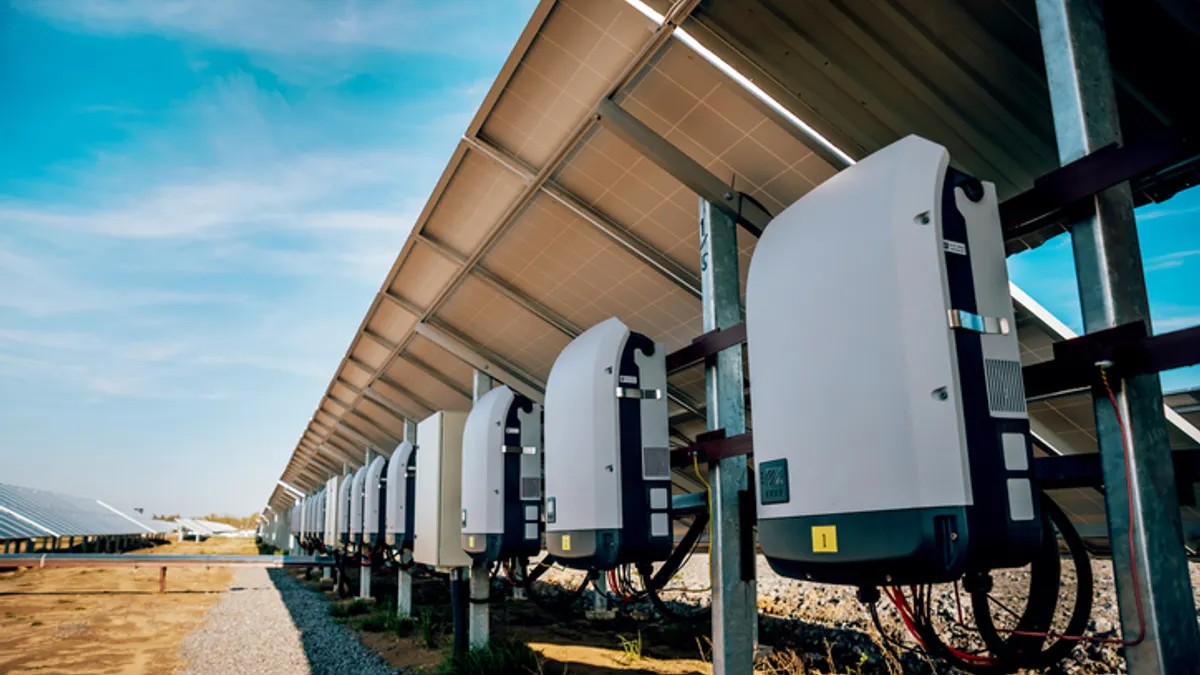Dive Brief:
- PacifiCorp revealed that 13 of its 22 coal units are more expensive than alternative options, such as clean energy, when discussing its coal fleet as part of a two-day public stakeholder meeting Monday and Tuesday.
- The Berkshire Hathaway subsidiary used unit-by-unit analysis to calculate a net benefit or cost for taking the coal units offline by 2022, showing nearly 60% of the retirements would lead to savings. But the utility says more analysis is needed before any shutdown decisions are made.
- The announcement is on par with analysis from the environmental group Sierra Club, which noted in a June report that wind energy was a cheaper replacement option for 20 of 22 PacifiCorp coal plants. Pacificorp's analysis of potential retirements is not final and more updates are expected on the company's coal fleet assessment at an integrated resource process (IRP) stakeholder meeting on Jan. 24.
Dive Insight:
PacifiCorp's announcement is not an official step toward early coal plant retirement, but it is part of a larger trend of economic analysis showing the difficulties of coal generation in competing with cheaper natural gas and renewable energy. Last week, the Carbon Tracker Initiative published a report concluding 42% of global coal plants are uneconomic due to high fuel costs, saying the percentage would rise due to carbon pricing and regulations.
The Oregon Public Utilities Commission directed PacifiCorp at the end of 2017 to launch a comprehensive review of the cost of its coal resources. In September, a Washington Superior Court judge allowed the company to keep the analysis confidential, after the Sierra Club pressed for the figures to be made public.
"Let's not forget that PacifiCorp sued a public agency to keep its coal fleet economics secret," Christopher Thomas, senior campaign representative of the Sierra Club's Beyond Coal Campaign, told Utility Dive in an interview. "But certainly we welcome this new level of transparency and hope it's the new normal going forward. Customers want renewable energy and have a right to know that a cleaner energy future is also a cheaper one."
PacifiCorp's analysis showed 13 units at plants in Montana, Colorado and Wyoming were more expensive to operate than replacement options.
The company presented several scenarios of preparing a combination of coal units for 2022 retirement and found it could save as much as $317 million for closing five units representing 834 MW. Those units, in Wyoming and Colorado, are slated to close between 2029 and 2037.
But the company's presentation noted more considerations need further study "before future resource decisions are made." The coal analysis is part of the utility's 2019 IRP, which is due in April. Oregon's regulators committed to evaluating early coal unit retirements as part of the utility's IRP.
PacifiCorp also identified some unknowns in its reliability analysis of removing coal from its system, noting the need to "evaluate potential operational adjustments or resource alternatives to remedy identified capacity shortfalls."
"To me, that's a marker that they're not ready to say they will retire this coal on the schedule they've found would save their customers money. They haven't finished their homework yet on how to operate the system with much higher shares of renewable energy replacing the coal," Mike O'Boyle, director of electricity policy for Energy Innovation, told Utility Dive via email.
He pointed to advanced modeling studies from NREL and Vibrant Clean Energy, among others, as evidence that replacing coal with renewable energy is feasible from a reliability perspective.
"PacifiCorp just revealed that most of its coal units are uneconomic, and now it's important to figure out the best timing and combination of units to replace with clean energy to best serve customers," Thomas said.
He noted the Northern Indiana Public Service Company's (NIPSCO) efforts to transition from using 65% coal generation to 15% by 2023 and none by 2028, in an effort to save more than $4 billion with cheaper resources, such as wind, energy storage, solar and demand management.
For comparison, PacifiCorp's energy mix is nearly 60% coal and less than 8% wind and solar. In addition, NIPSCO is only serving about 500,000 electric customers, based in Indiana, while PacifiCorp has nearly 2 million customers in several western states, and owns coal units in Arizona, Colorado, Montana, Wyoming and Utah.
"We're seeing utilities throughout the region shifting from coal to renewable energy and batteries to save customers money, and it's time for PacifiCorp to catch up," Thomas said.
CORRECTION: A previous version of this story misnamed the official meeting set for Jan. 24. It is an IRP stakeholder meeting.














